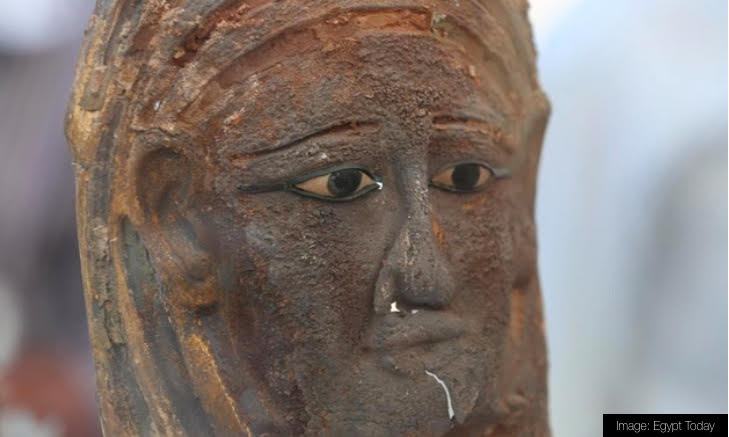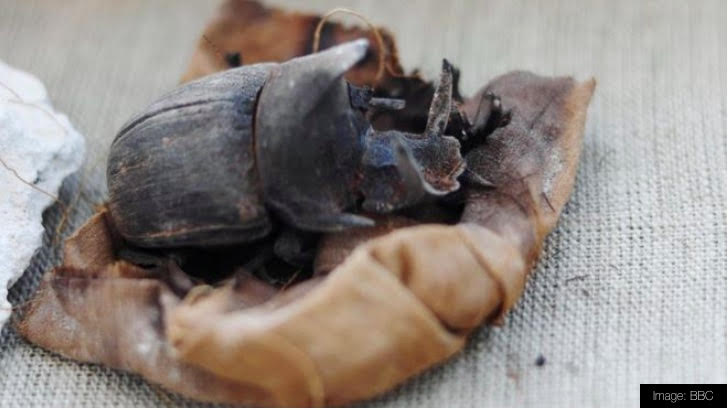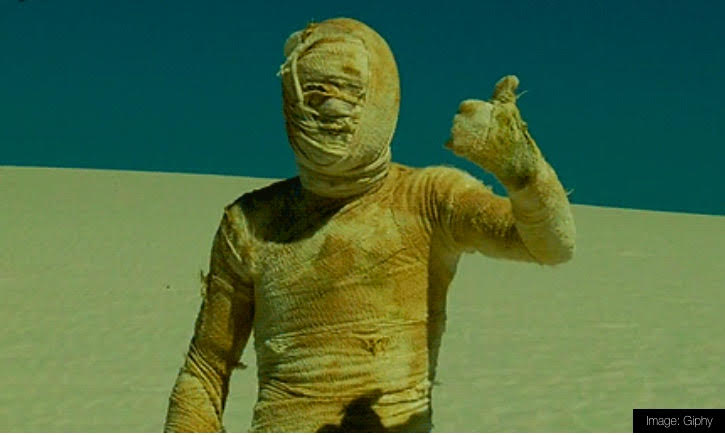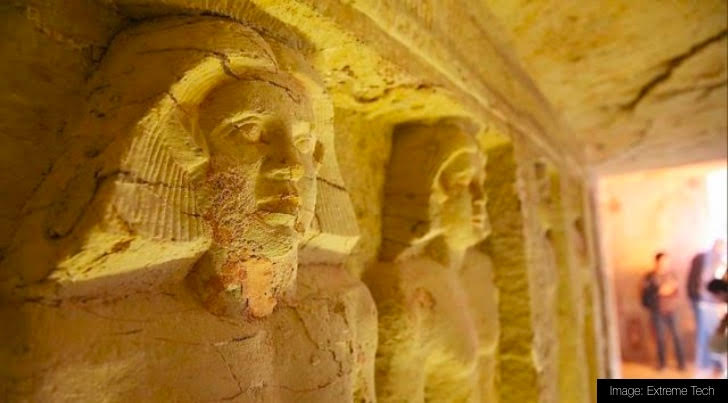This groundbreaking discovery could change what we know about ancient Egypt, so why were the experts left scratching their heads? It’s ultimately a confusing and exciting story that can make you feel many things. What could these people have unearthed, and why were the professionals so concerned?
Hidden in the Desert
Egyptologists and archaeologists have been searching for ancient relics and discovering thousands of secrets hidden in the Egyptian desert since the early 1800s. It’s fascinating! However, there are still many gems that they haven’t uncovered yet!

Hidden in the Desert
Fixing the Damage
It’s a scavenger hunt, and archaeologists have to be careful. The Ministry of Antiquities in Egypt has led many new explorations in recent years because it wants to make those discoveries. However, they also need to repair damages done by robbers and tomb raiders.

Fixing the Damage
The Unexpected Encounter
Many areas have been left unguarded since the Egyptian revolution in 2011, including the Great Pyramids. Therefore, grave robbers can steal artifacts and ransack the area. Whether they’re tied to the criminal underworld or stolen for profit doesn’t matter.

The Unexpected Encounter
Huge Discoveries
One newly excavated site was the necropolis of Saqqara, which is an ancient historical site. Overall, the Ministry of Antiquities found ground-breaking treasures back in 2018 that were one-of-a-kind and well-preserved. It claimed it was the most beautiful tomb anyone had ever located.

Huge Discoveries
The Saqqara Coffin
What sets that site apart from the others? Most of the relics were stolen or destroyed, but a silver mask with gold plating was located inside one wooden coffin. Such treasures are few and far between, so the excavators prepared to find other things within.

The Saqqara Coffin
The Tip
Archaeologists then found a mask, which implied that other artifacts were inside. After someone found a mummy, they noticed many other items. For example, a stone ridge held seven tombs with rare scarab beetles and mummified kittens inside.

The Tip
Mummified Animals
Human bodies were often mummified to protect them in the afterlife. However, animals got fossilized for religious offerings. The scientists collected those preserved creatures and were happy to explore the undisturbed tomb because they thought there were human remains.

Mummified Animals
The Carvings
That was the burial place of Wahtye, a high priest, and had been hidden for 4,400 years. It was a 10-foot-high, 9-foot-wide, and 33-foot-long tomb with paintings, intricate carvings, and hieroglyphics to show his life.

The Carvings
Mummy’s Boy
Wahtye had been buried beside his mother, Merit Meen. Archaeologists tried to find a spot inside the tomb where he didn’t pay homage to her. Overall, his mom’s paintings, monuments, and drawings adorned all the walls.

Mummy’s Boy
Egypt’s Culture
Though Wahtye had a wife, she was of little importance. The Saqqara site showed tons of information about daily life in ancient times. It appeared to be a modern society full of educated people who understood furniture making, sailing, winemaking, and more.

Egypt’s Culture
The Last Tomb
As the archaeologists examined the tomb, they learned plenty about Wahtye. It was fascinating to find out about his life, position, and family within the fifth dynasty, but the team wanted to locate his final resting place, which was hidden!

The Last Tomb
Inside the Tomb
They finally got lucky at the end of 2018 when they saw five shafts. However, the first one was already opened and empty. The four others might still hold the discoveries that modern society wanted to find!

Inside the Tomb
Finally Seeing
Mostafa Waziri was the general for the Supreme Council of Antiquities. He said that he couldn’t imagine the objects found in the areas, and the biggest answers were yet to be found in the other shafts. One of them had to lead to a sarcophagus or coffin for the tomb’s owner.

Finally Seeing
More Chambers
Officials believed that more was in the preserved chambers, and the archaeologists had to dig by hand to find more artifacts. Construction workers in Alexandria hit something other than bedrock and were happy for that joyous occasion.

More Chambers
The Hot Spot
Egypt had already known that artifacts found in pyramids could be spectacular discoveries. Look at King Tut’s tomb as an example! In fact, Alexandria, the old city, was a hive of new activity and something that people wanted to know more about.

The Hot Spot
Huge Changes
During the glory days, this city was full of traders, merchants, and ships. Alexander the Great founded it, and this was the link between the Nile Valley and Greece. Clearly, things have moved on, and Alexandria is now a highly populated city with many residences.

Huge Changes
Quite Massive
While they excavated the foundation of a new building, the construction crews found a huge tomb about 16 feet in the ground. It had been built anywhere from 305 to 30 B.C., and the experts say that it was in the Ptolemaic period.

Quite Massive
Alabaster Head
The sarcophagus was huge and in the corner. Since it was bigger than normal, archaeologists wanted to know what was in it. Along with it was an alabaster head. However, the features were deteriorated, so they couldn’t figure out if it was an important person or not.

Alabaster Head
Trying to Pry It Open
About six men tried prying the lid of the sarcophagus off, but it was much too heavy for them. They decided to bring in heavy machinery to get the job done, so they contacted a subject-matter expert to assist.

Trying to Pry It Open
Bizarre Items
Ayman Ashmawy had been with the Ministry of Antiquities for many years. He examined the site and found mortar between the body and lid, which indicated that it had been sealed for about 2,000 years. It was made of black granite, and that was hard to come by.

Bizarre Items
Attracting Thieves
Who was buried inside? Could it be a well-known figure or a high-ranking official? That tomb was cordoned off immediately because it was sure to be a target for thieves and vandals. The word of this discovery was spreading like wildfire.

Attracting Thieves
Endless Possibilities
While some people thought that opening tombs were a bad omen, most people thought something very important was inside from the sheer size of the sarcophagus and the unique material. Could Alexander the Great be involved somehow?

Endless Possibilities
Safely Opening It
Massive cranes and thick ropes were needed, but the workers finally secured the lid. That was necessary so that it didn’t destroy whatever was inside if it fell during the lift. Plus, people could get injured. Slowly, they opened the casket!

Safely Opening It
Skeletons and Sewage
People immediately rushed away from the horrid smells, but they saw thick red liquid once it dissipated. It had been used to submerge three very deformed skeletons. They were finally identified as soldiers, though the red liquid was a toxic waste that had leaked in at some point.

Skeletons and Sewage
Red Goo Drink
Game developer Innes McKendrick wanted to turn that red good into a carbonated energy drink. He said that people could get magical powers if they drank the liquid. Fortunately, though, no one wanted to drink corpse juice and his campaign failed, though it was likely all a big joke anyway.

Red Goo Drink
Tomb of Soldiers
Egypt has made many discoveries and is continuing to do so. In fact, a network of tombs reported to be 2,000 years old was found under Cairo, according to many researchers. However, it was likely to take about five years to excavate that find.

Tomb of Soldiers
California Desert
While Egypt has been making discoveries at a fast pace, the California desert was also in the news. People had been digging around there and had found some shocking things. What could they have possibly uncovered?

California Desert
The California Sphinx
People brushed away sand and dirt and found a crown, curved nose, and delicate ears. Archaeologists wondered how a sphinx head from Egypt came to be in Santa Barbara. However, it didn’t take long to figure things out.

The California Sphinx
Real or Fake
Bedrock had to be used to carve out an authentic sphinx head in ancient Egypt. Though the Californian find was imposing, it was made of lighter material. The archaeologists had white powder all over their hands afterward.

Real or Fake
The Prop
Aliens hadn’t teleported a sphinx to California or anything like that. Instead, people believed it was from The Ten Commandments, starring Charlton Heston in 1956. However, the head had to come from an older film, which happened through visual effects.

The Prop
Special Effects
DeMille had adapted The Ten Commandments before 1956. In fact, he tried in 1923 to adapt that biblical story into the first epic film. He couldn’t use computer-generated effects as he did for the later movie or the ones we’re used to watching today.

Special Effects
Large Props
He used the Guadalupe-Nipomo Dunes within Santa Barbara for the initial movie, and they built the stage by hand. It included 21 sphinxes, an Egyptian temple, eight lions, 110-foot gates, and four Pharaoh statues at 35 feet tall. More than 1,600 people helped.

Large Props
The Strange Sphinx
This set was one of the most expensive and largest built at the time. It was 800 feet wide and 12 stories tall, using 250 tons of plaster and 25,000 nails. However, the strange thing was the decorations on the sphinx heads.

The Strange Sphinx
Technicolor
The film was black and white, but they were colored to stand out when Technicolor became available. Archaeologists were shocked by the intense shades used. Many scenes used color, but a few of them weren’t.

Technicolor
Jell-O
The Red Sea had to be parted in both films; they had to get creative for the 1923 version. They ended up making waves in large slabs of Jell-O to get that “parted sea’ effect in the movie.

Jell-O
Reality
DeMille had a love/hate relationship with the movie, and it was the first iconic film for Hollywood. The city he had built was too expensive and hard to move or abandon, but he had to do something with it.

Reality
The Decision
Hollywood filmmakers liked to recycle props and sets, but DeMille was an artist and didn’t want others to profit from his work. He said that he hoped archaeologists didn’t rush to print about a new Egyptian civilization in California in 1,000 years.

The Decision
Burying the Set
DeMille determined that no one else use his elaborate set if he couldn’t himself. Therefore, he demanded that people demolish the entire structure and bury it all underground so that others didn’t repair it.

Burying The Set
Saving the Prop
Overall, the prop set had been buried for 94 years, so the first head crumbled when people touched it. The next time, archaeologists used foam spread to strengthen the head’s interior so that they could get it out of the sand.

Saving The Prop
Treasures in the Ground
That head might not have come from the ancient Egyptian desert, but it’s a part of history for Hollywood. Movie sets in the Golden Age don’t exist anymore. Therefore, to find unknown scraps hiding under sand dunes makes it historical for everyone!

Treasures In The Ground




